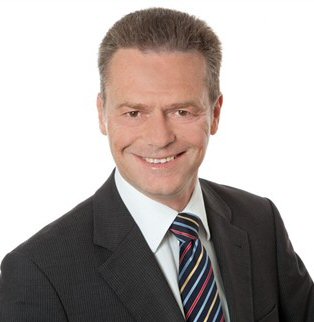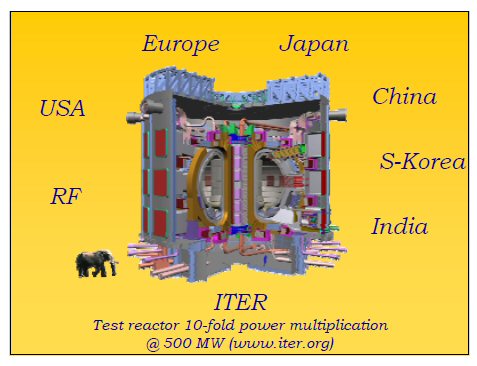Return to ITER Power Facts Main Page
By Steven B. Krivit
June 13, 2022

Johannes Schwemmer, Director of Fusion for Energy
The governing board of the European ITER domestic agency has removed Johannes Schwemmer as its director, effective June 16, 2022.
The agency, known by the name Fusion for Energy, which is responsible for the European construction activities for the International Thermonuclear Experimental Reactor, announced the news on its Web site today.
Pietro Barabaschi, the head of Fusion for Energy’s Broader Approach Program & Delivery, will become acting director until the appointment of a new director. Schwemmer, the leader of Fusion for Energy since Jan. 1, 2016, was in his second term, which was to end on Dec. 31, 2023.
Schwemmer had a history of making false and exaggerated claims about the purpose and design objective of the ITER project. Two years ago, he was directed by Kadri Simson, the European Commissioner responsible for the European Commission’s Directorate-General for Energy, to make corrections to his organization’s public claims.
Schwemmer’s leadership came under further attack last year, when Michel Claessens, the former spokesman for ITER, provided the European Parliament, the European Commission, and the European Anti-Fraud Office with a critical report about the ITER project. (English PDF, French PDF)
This prompted other people to come forward. On Jan. 17, 2022, the heads of the three labor unions representing the European ITER workers sent a letter to the European Commission about the critical situation in the Fusion for Energy agency. New Energy Times obtained a copy of this letter.
Politico.EU, in a Jan. 26, 2022, article written by journalist America Hernandez, reported a “toxic work culture” at Fusion for Energy. European workers had complained through their unions that a culture of overwork, stress, and abusive management had led to illness among workers and an employee’s suicide, Hernandez reported.
A month later, on Feb. 28, 2022, in response to the initiative of Michèle Rivasi, the European Parliament’s budgetary control committee held a public hearing. MEP Rivasi told New Energy Times that the Parliament’s budgetary control committee has not been given access to an accurate timetable of the costs.
“This is an aberration for taxpayers’ money,” Rivasi said. “Furthermore, the fusion community has relied on misleading communication about ITER’s performance and if it ever succeeds, would be far too late to help fight climate change anyway.”
Schwemmer and Claessens were among the witnesses called at the hearing. In his testimony, Claessens implored the European Commission to remove both Bernard Bigot, the leader of the international ITER organization, and Schwemmer, the leader of Fusion for Energy.
Bigot died from a medical issue a month ago, and his successor has not been named. As of June 16, the two key organizations responsible for building ITER will be without directors.
In other related news, the European Council is taking steps to understand the risks of using beryllium in fusion reactors, including ITER. Kathryn Creek, one of two former U.S. Department of Energy beryllium safety experts who worked at ITER, had contacted New Energy Times because Bigot was not taking their concerns seriously.
Beryllium is more toxic than asbestos or hexavalent chromium, the toxic chemical made famous by Erin Brockovich’s investigation. We referred Creek to Celia Izoard, an environmental journalist, who first reported the beryllium story.
Last week, Creek told New Energy Times that she will be presenting a talk on the risks of beryllium in fusion to the European Council in November.



